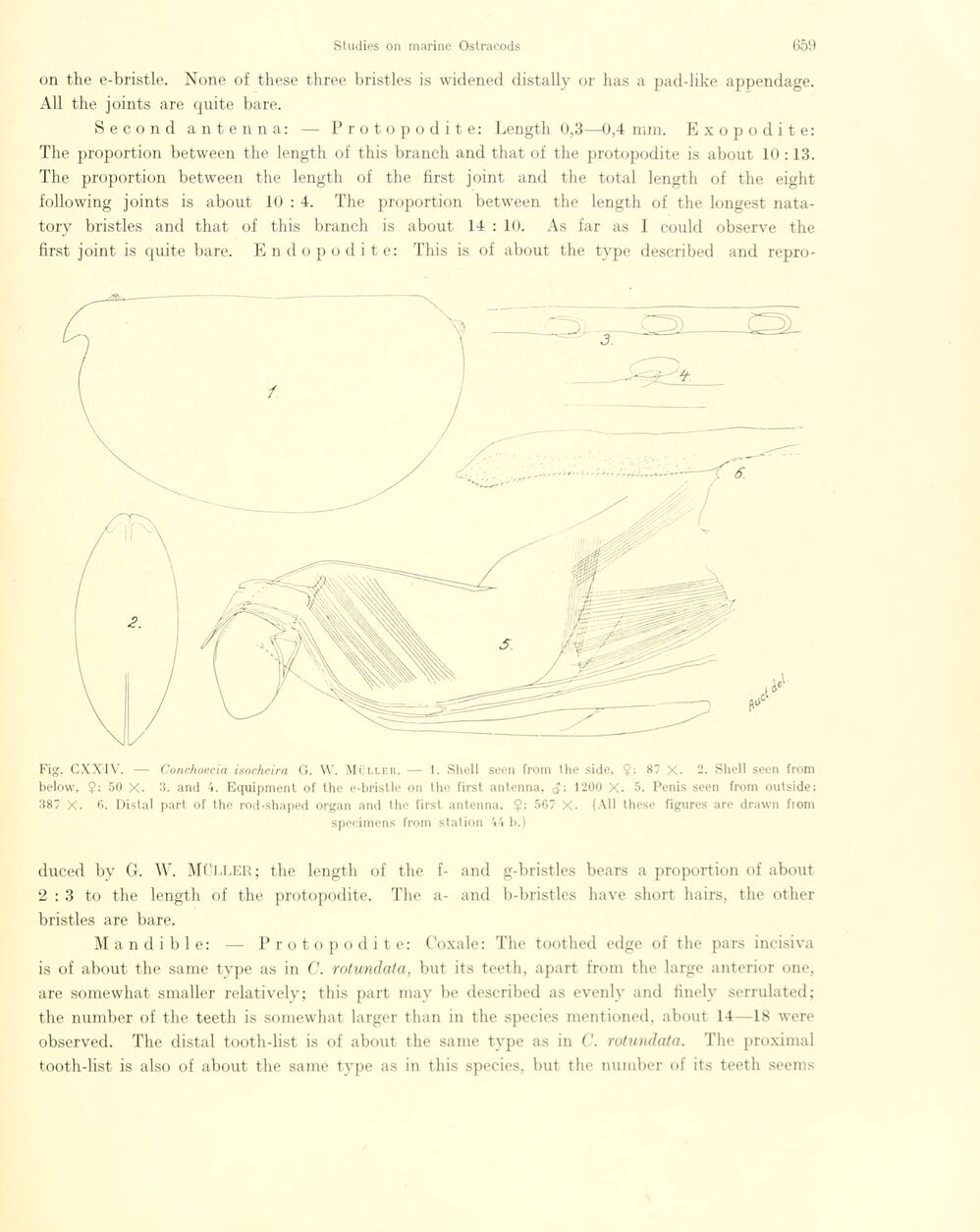
Full resolution (JPEG) - On this page / på denna sida - Sidor ...

<< prev. page << föreg. sida << >> nästa sida >> next page >>
Below is the raw OCR text
from the above scanned image.
Do you see an error? Proofread the page now!
Här nedan syns maskintolkade texten från faksimilbilden ovan.
Ser du något fel? Korrekturläs sidan nu!
This page has never been proofread. / Denna sida har aldrig korrekturlästs.
on the e-bristle. None of these three bristles is widened distally or has a pad-like appendage.
All the joints are quite bare.
Second antenna: — Protopodite: Length 0,3—0,4 mm. Exopodite:
The proportion between the length of this branch and that of the protopodite is about 10:13.
The proportion between the length of the first joint and the total length of the eight
following joints is about 10 : 4. The proportion between the length of the longest
nata-tory bristles and that of this branch is about 14 : 10. As far as I could observe the
first joint is quite bare. En dopo dite: This is of about the type described and repro-
Fig. CXXIV. — Conchoccia isocheira G. W. Müller. — I. Shell seen from the side, $; 87 X. 2. Shell seen from
below, $; 50 X. 3. and 4. Equipment of the e-bristle on the first antenna, 1200 X. 5. Penis seen from outside;
387 X. 0. Distal part of the rod-shaped organ and the first antenna. $; 567 X- (All these figures are drawn from
specimens from station 44 b.)
duced by G. W. MÜLLER; the length of the f- and g-bristles bears a proportion of about
2 : 3 to the length of the protopodite. The a- and b-bristles have short hairs, the other
bristles are bare.
M a n d i b 1 e: — Protopodite: Coxale: The toothed edge of the pars incisiva
is of about the sanie type as in C. rotundata, but its teeth, apart from the large anterior one,
are somewhat smaller relatively; this part may be described as evenly and finely serrulated;
the number of the teeth is somewhat larger than in the species mentioned, about 14—18 were
observed. The distal tooth-list is of about the sanie type as in C. rotundata. The proximal
tooth-list is also of about the same type as in this species, but the number of its teeth seems
<< prev. page << föreg. sida << >> nästa sida >> next page >>